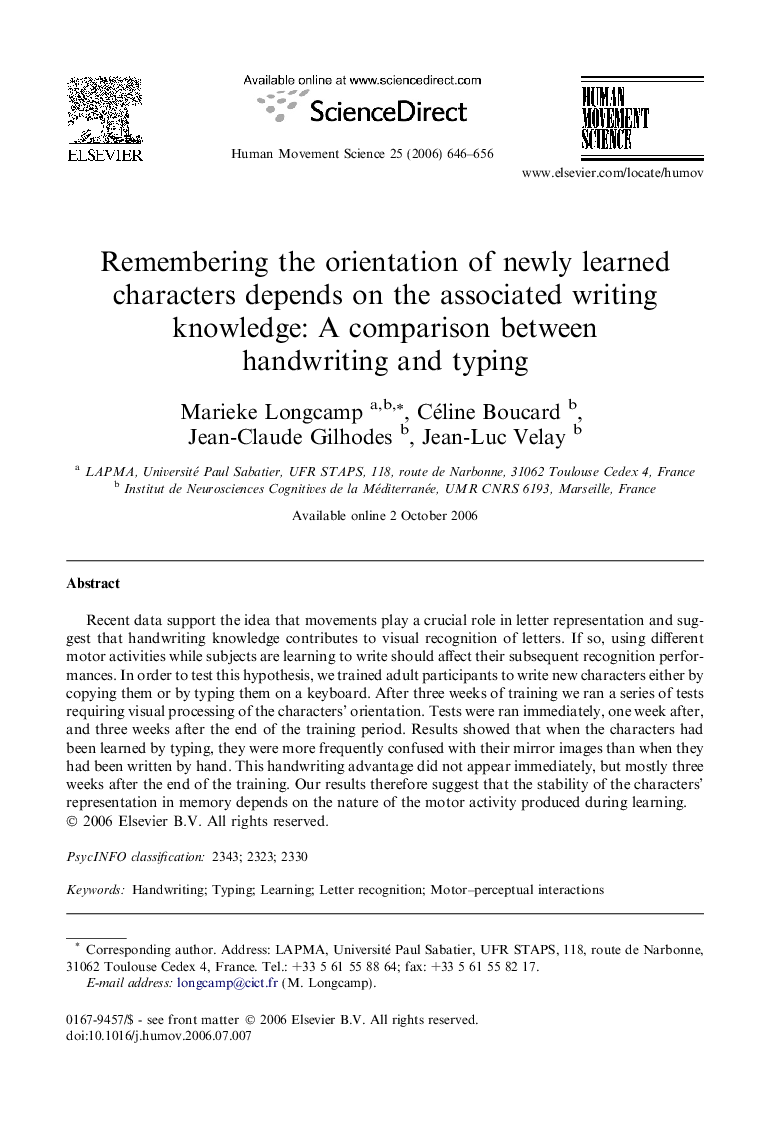| Article ID | Journal | Published Year | Pages | File Type |
|---|---|---|---|---|
| 928930 | Human Movement Science | 2006 | 11 Pages |
Recent data support the idea that movements play a crucial role in letter representation and suggest that handwriting knowledge contributes to visual recognition of letters. If so, using different motor activities while subjects are learning to write should affect their subsequent recognition performances. In order to test this hypothesis, we trained adult participants to write new characters either by copying them or by typing them on a keyboard. After three weeks of training we ran a series of tests requiring visual processing of the characters’ orientation. Tests were ran immediately, one week after, and three weeks after the end of the training period. Results showed that when the characters had been learned by typing, they were more frequently confused with their mirror images than when they had been written by hand. This handwriting advantage did not appear immediately, but mostly three weeks after the end of the training. Our results therefore suggest that the stability of the characters’ representation in memory depends on the nature of the motor activity produced during learning.
